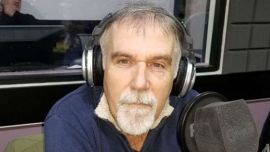OK so we’re done with 2017. Last week’s edition of the Times took care of that: well-written, clearly stated as usual, and delivered the way we Argentines like to deal with the past, the quicker we can forget it the faster we can ruin the future. It’s a sort of reminder of the best of Stalinism that we could endure. “We have no trouble with the present or the future. We can quickly arrange them. The problem is when the past needs rearranging.”
What can you read into New Year’s Eve summaries? They are often forgettable. Our only year-end that I can journalistically rescue as interesting was 2001-2002, the 11 days of five presidents. Argentina was in the mind of everybody all over the world. It was too important a time to be repeated. Tourists everywhere were screaming poverty and Argentines were enjoying the chance to draw attention to the country, but they had to explain where the country is and what it was – “You know, Argentina, Maradona…” – and the flummoxed foreigner would reply, “Oh, yeah, that carbuncle on the arse of the world, man, it has… great football.” Yeah, man, that’s us.
Move away from the attempt to sort out the past. What target that is simple, achievable, understandable, harmless, non-aggressive and constructive could we set ourselves as reasonable? My own suggestion would be to apply for removal of the name ‘Kirchner’ from the Centro Cultural Kirchner, atop the grand entrance to the old Central Post Office. That would close one small chapter from the past. Anyway, by established parameters the name should not have been there. The name went up ahead of the prudent lapse between date of death and obsequies and the City Council vote or, better still, an agreement of tribute in parliament. In the current case, the dry-eyed widow rushed to put her favourite dead body because he would never get his name that high up when she had left office or the auditors moved into her estate.
In my New Year aspirations, I would like that name removed. But just to show my balanced opinion (I have chips on both my shoulders), I was not against the removal of the statue of Christopher Columbus, installed for decades between the back of the Casa Rosada, on a section of the ancient town’s fort, and the River Plate (the monument donated by the Italian Community to Argentina). Columbus had the statue of Admiral William Brown on his (Columbus’) left, guarding against traffic excesses on Av. L. N. Alem. But the abrupt, non-consulted form in which Colón was brought down and thrown on his back seemed in the nature of a prepared offence. To replace him came Juana Azurduy Padilla (1780-1860), Bolivian-born, though before Bolivia existed, when it was part of the Spanish empire. Azurduy’s is a story of remarkable conviction and bravery, also a tale of self-centred action and neglect of her own family. She was expelled from the convent where she wanted to be a nun, she married Padilla, had four children and then joined the revolutionary army against the Spanish imperial forces. Her four sons died of malnutrition while she was away fighting. She had a fifth child, a girl, who survived. Juana Azurduy died in utmost poverty in Jujuy. Her name is considered that of a national heroine. Her name was for a long time something in the largely ignored history of my country. Her life and bravery were grudgingly recognised as those of a courageous fighter. In the end, in her emaciated starved state, she was thrown into a common grave.
So Cristina Fernández de Kirchner wanted to recover and recognise a great woman. The monument was produced in Bolivia, whose president, Evo Morales, stumped up the cheque to pay for it. The emplacement was never a consulted site. Juana Azurduy would have required a season of study, not being a popularly known figure. Then it was reported, probably out of opposition spite, that the monument had started to chip and crack even before it rose up fully dressed in Cristina’s then-backyard, formerly a public walk and quite attractive garden. Last mid-September, the lady’s 41 metric tons of stone was moved without much fuss. The best view of the removal was the photographer’s picture of the stone lady with her sword raised against an enemy, high up on the extra-long truck that took her the few blocks to her new setting. The photo represented one of the more interesting ways of playing down history. Azurduy now stands facing the old Central Post Office, the CCK, which should not have that name.
Like so many other things in Argentina, the statue of Juana Azurduy arrived at its initial setting by the unclear whim of Cristina Fernández de Kirchner, a woman with a perverse ambition for political power and notoriety. The whole incident and probably more incidents, not necessarily similar, prompts the query as to how the times and performance of a successful lawyer such as Cristina might be remembered.
This article could have been developed as a heart-felt diatribe against the historical failings of our self-proclaimed seniors and betters, errors which they persist in committing and even justify. And yet it has become a quiet revision of… a little aspect of Argentina’s past. It’s not easy to get away from that past. There’s too much of it that the authorities want to shroud with the clouds of time. Ignorance or stupidity? Maybe just badly informed.
That query is part of continuing mystery. Society prefers to deny. I’ll try to develop my prejudices better next time.



















Comments